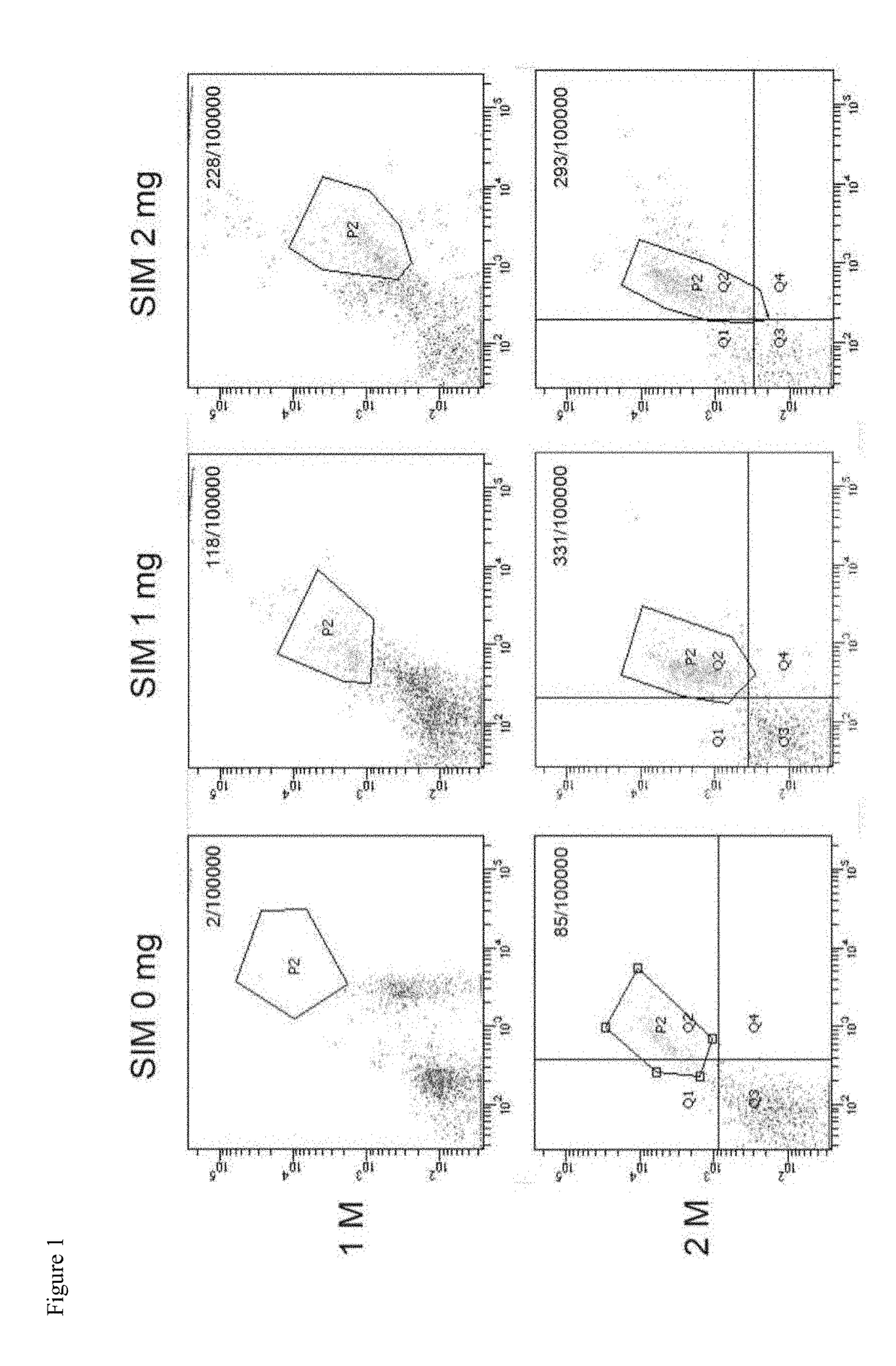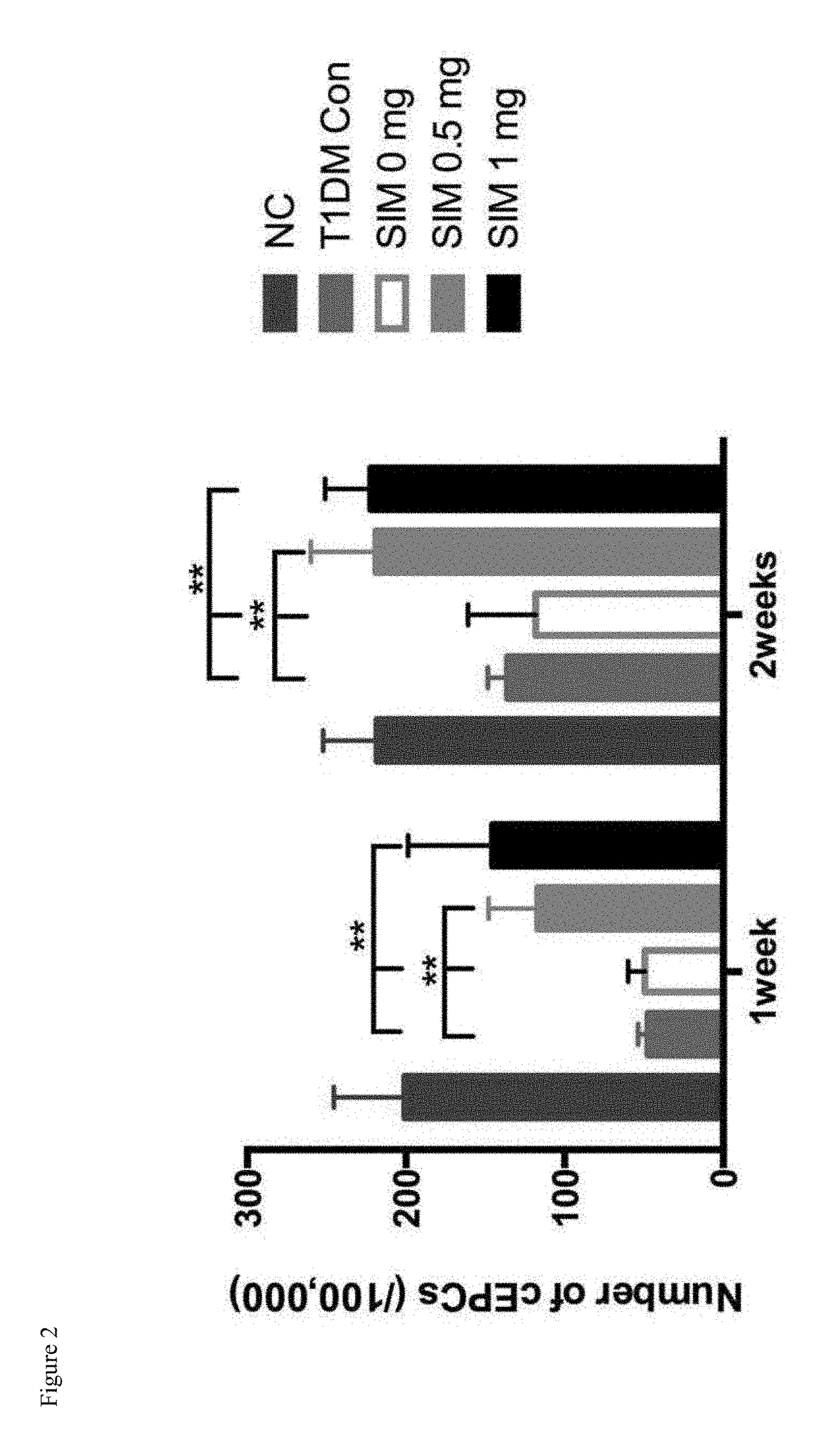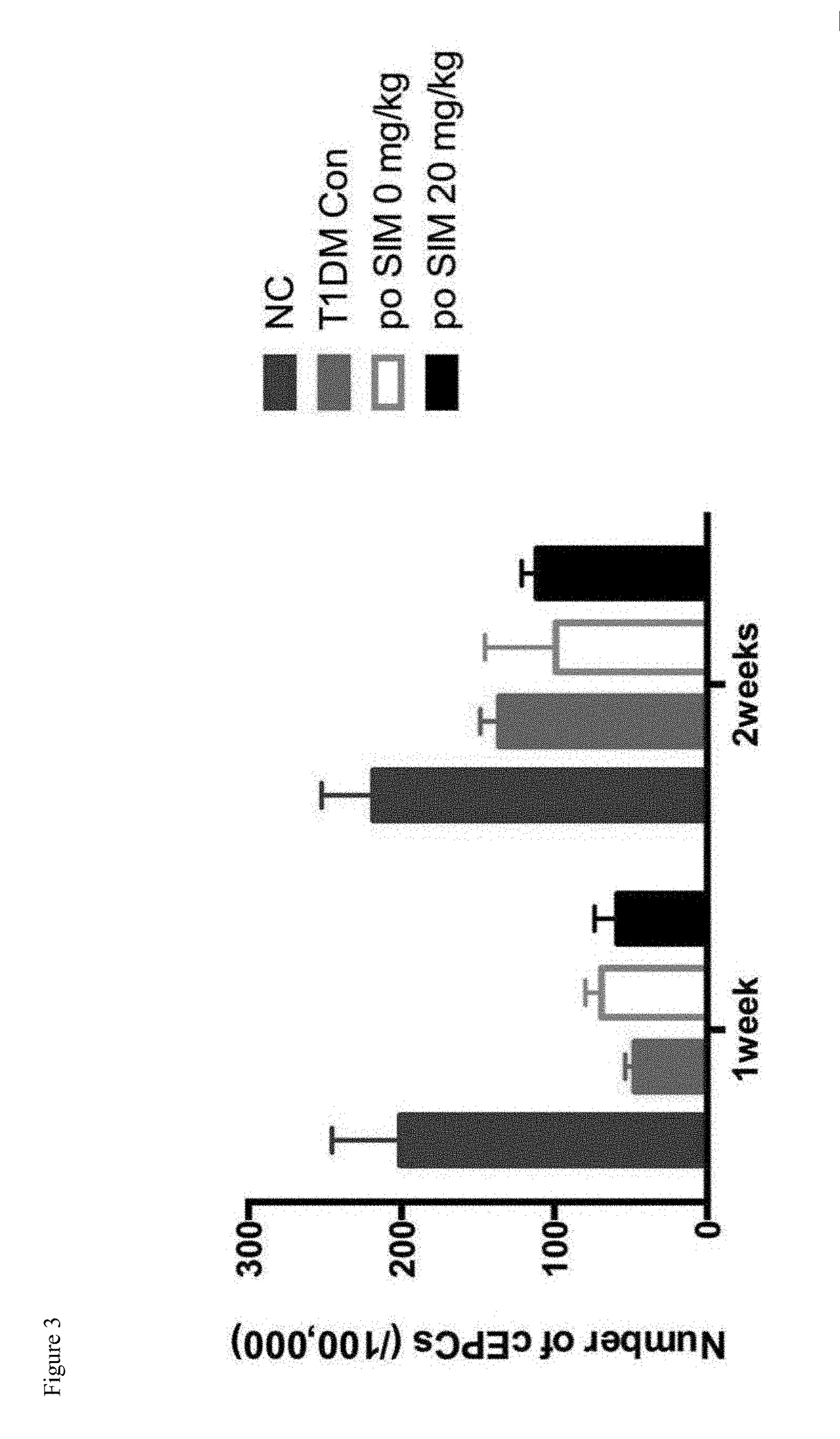Use of statins in the treatment of ischemic diseases
- Summary
- Abstract
- Description
- Claims
- Application Information
AI Technical Summary
Benefits of technology
Problems solved by technology
Method used
Image
Examples
preparation examples
Preparation of Intraosseous Injective Simvastatin Solution
[0044]Simvastatin (1000 mg) was dissolved in 10 ml phosphate-buffered saline (PBS) containing 2% dimethylsulfoxide (DMSO; Sigma, USA) and 0.1% bovine serum albumin (BSA, Sigma, USA), the obtained solution is homogeneous.
Preparation of Intraosseous Injective Thermosensitive Simvastatin Hydrogel
[0045]Poloxamer 407 (BASF, Ludwigshafen, Germany; 25% w / w) was added to isotonic phosphate-buffered saline (PBS, pH 7.4, 4° C.) with gentle mixing until complete dissolution.
[0046]Gels loaded with simvastatin (National Institutes for Food and Drug Control, Beijing, China) were prepared by adding the drug to the prepared poloxamer 407 solutions. The final simvastatin concentrations were 0, 0.5, or 1 mg / ml.
example 1
[0047]Long-Term Mobilization of Endogenous EPCs in Type 1 Diabetic Rats after Single Local Intraosseous Injection of Small Dose Simvastatin
[0048]In the STZ induced type 1 diabetic rat model, we found that 1 month and 2 months after single local tibial intraosseous injection of simvastatin, the results showed that the circulated number of EPCs in the simvastatin group significantly increased, which was verified by FACS (see FIG. 1).
example 2
Comparison the Effects of Mobilization of Endogenous EPCs Between Intraosseous Injection of Single Small Dose of Simvastatin and Oral Administration of High Dose Simvastatin in the Hind Limb Ischemia Model of Type 1 Diabetic Rats
[0049]The right side of the rat femoral artery was removed by 1 cm segment in the STZ induced type 1 diabetic rats. The left tibia received a local single intraosseous injection with 0 mg, 0.5 mg, 1 mg simvastatin respectively, and the number of circulated EPCs was detected by FACS. The results showed that a local single intraosseous injection of simvastatin can significantly increase the number of EPCs in the circulation (P<0.01) (see FIG. 2). However, in the daily administration of 20 mg / kg simvastatin group, the result of FACS showed that the oral administration of high dose simvastatin did not significantly increase the number of EPCs in the circulation (results see FIG. 3). The results implied that different routes of administration of simvastatin might...
PUM
| Property | Measurement | Unit |
|---|---|---|
| Time | aaaaa | aaaaa |
| Time | aaaaa | aaaaa |
| Time | aaaaa | aaaaa |
Abstract
Description
Claims
Application Information
 Login to View More
Login to View More - R&D
- Intellectual Property
- Life Sciences
- Materials
- Tech Scout
- Unparalleled Data Quality
- Higher Quality Content
- 60% Fewer Hallucinations
Browse by: Latest US Patents, China's latest patents, Technical Efficacy Thesaurus, Application Domain, Technology Topic, Popular Technical Reports.
© 2025 PatSnap. All rights reserved.Legal|Privacy policy|Modern Slavery Act Transparency Statement|Sitemap|About US| Contact US: help@patsnap.com



